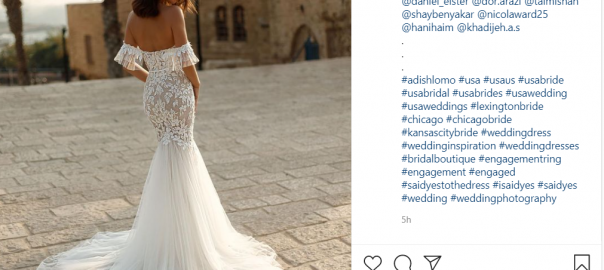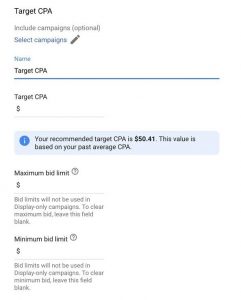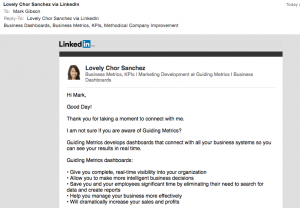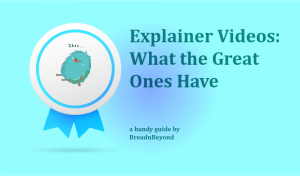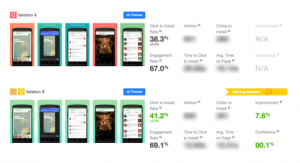Hashtags have become a common part of the social media landscape, used for everything from social movements to weddings. Beyond being a fun way to caption your post, hashtags can be a powerful marketing tool. So, what is a hashtag?
Below, we’ll cover all the basic things you need to know about hashtags, including:
- What is a hashtag?
- What are the benefits of using a hashtag?
- How do you create the perfect hashtag?
- How do you use hashtags?
- How do you get started with using hashtags?
What is a hashtag?
A hashtag is created with a pound sign — classically used to mark numbers — at the beginning.
Mor than a dozen years ago, the hashtag was created by web specialist Chris Messina, who recommended the use of the octothorpe — another term for the pound sign — as a simple way to group like Tweets together. Chris Messina first tweeted using a hashtag in August of 2007.
Though hashtags were born on Twitter, they can be used on other social media platforms, including:
Essentially, hashtags are an effective way to link social media content to a specific topic or keyword. Hashtags make it easy for users to discover content within a certain movement or conversation. Their existence makes it possible to collect and display all posts on a specific platform that are listed under the same hashtag.
What are the benefits of using a hashtag?
No matter what social media platform you use to build your business, you can strengthen your social media strategy with hashtags. The benefits of using hashtags to promote your brand include the following.
Connecting with customers
When you use hashtags, you enter into the conversations that are happening on social media. Your brand becomes a noticeable part of the communications that matter to social media users.
Whether you are trying to boost engagement at an event or simply connect with new leads, using hashtags makes your brand more recognizable on social media. You will also encourage engagement by attracting customers to like, share, or comment on your content.
Providing context for your content
When it comes to writing captions, less is often more. This is true of nearly all social media platforms. Hashtags provide a succinct way to provide customers with important context.
For example, Disney generated buzz before, during, and after the opening of their Star Wars-themed attraction with #GalaxysEdge. Disney uses it when they post content from their various accounts. The hashtag also makes it easy for visitors and fans to take part in the conversation without needing to preface it with an announcement about the new attraction.
Building your brand
By crafting a branded hashtag, you can promote your brand in a recognizable way across multiple platforms. Hashtags are also a great way to generate buzz, launch important conversations, and ultimately drive customers to your brand website.
For example: Always’ #LikeAGirl campaign not only reclaimed the classically degrading phrase but earned it major brand recognition. By pushing back against a negative phrase — think about what “throwing like a girl” means — Always invited followers to take part in an important conversation. Beyond doing important social work, Always gained more followers and loyal customers.
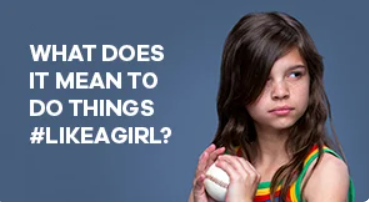
A memorable image from Always’ #LikeAGirl campaign.
Aligning your brand with social issues
Especially in the last few years, brands have begun to lend their voice to social issues that impact the world far beyond their business. A well-known example is the reaction to the #BlackLivesMatter hashtag — which averaged over 3 million Tweets per day at its peak. Many brands posted in support of the massive social movement.
Increasingly, consumers value brands that clearly state their stance on social responsibility and hashtags help them connect with the broader conversation.
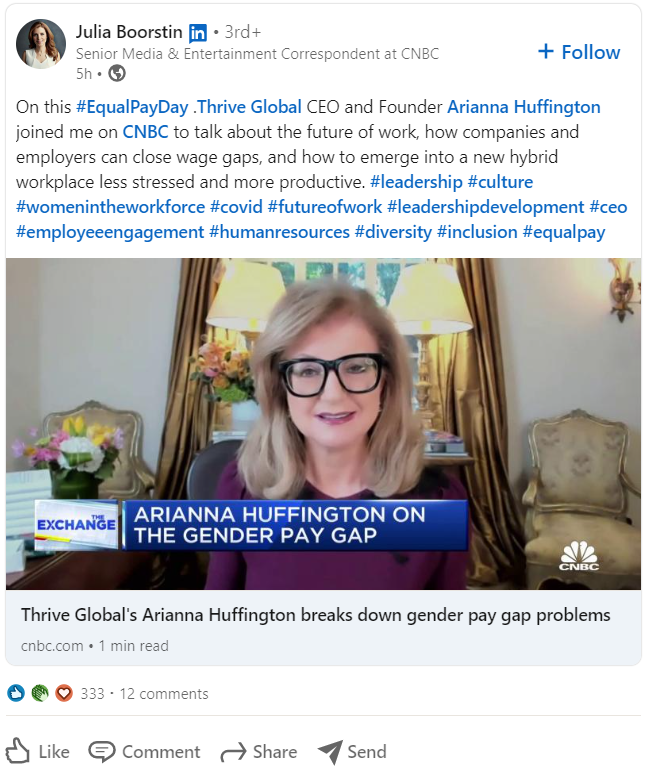
Thrive Global and CNBC engage with an important conversation with the hashtag #EqualPayDay.
Reaching your target audience
Hashtags are a powerful tool when it comes to helping new customers find your brand. Consumers may actively follow hashtags to find new brands, or they may simply stumble upon your brand while exploring a relevant tag. No matter what, using the right hashtag is often a direct line to your target audience.
A customer might search for #wedding or #bride to launch their wedding dress search. Boutiques that consistently use these hashtags will appear on Instagram or Pinterest when a future bride needs to see them the most. Use hashtagged posts to connect followers to your online store.
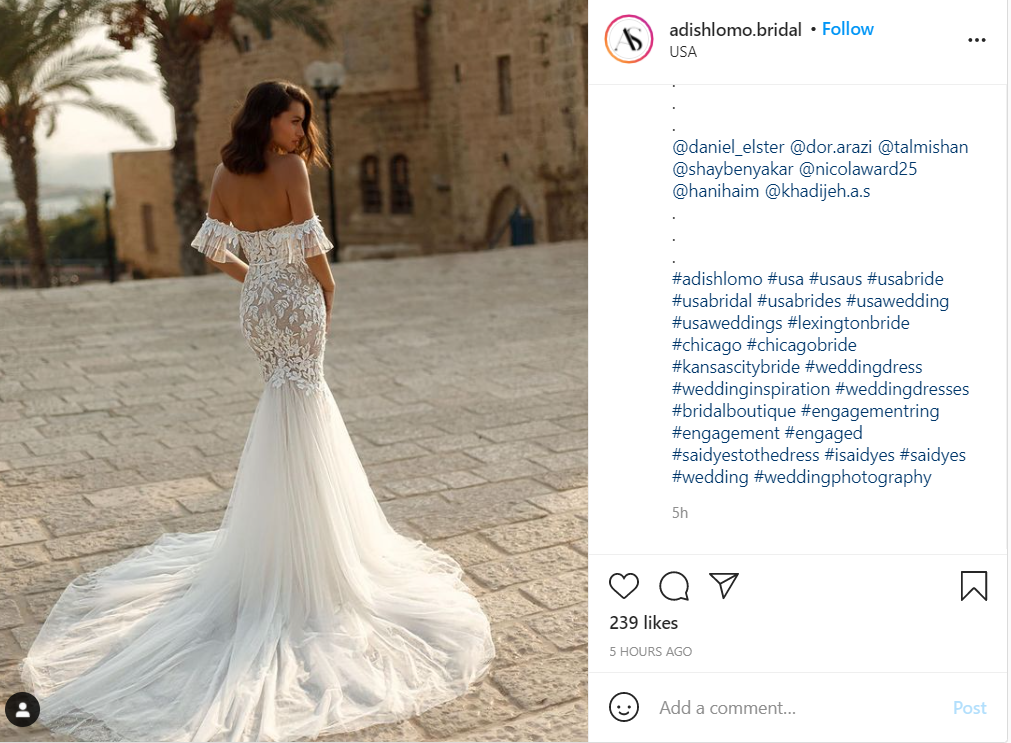
This bridal company connects with women searching for wedding dresses by using the hashtag #wedding.
How do you create the perfect hashtag?
By design, creating a hashtag is simple. However, there are a few basic rules to follow, including:
- Always start with the hashtag symbol.
- Capitalize words for clarity if needed.
- Create a memorable phrase when possible.
- Don’t use spaces, symbols, or punctuation.
- Keep your hashtags short.
- Limit the number of hashtags you stack in one post.
- Make your accounts public so your posts can be seen.
Beyond the basics, there are several techniques you can follow to create or find the best hashtags for your brand.
Paying attention to trending hashtags
Choosing successful hashtags involves a healthy combination of starting meaningful conversations and simply taking part in the daily culture of social media. #ThrowbackThursday or #TBT is a classic hashtag that still accompanies millions of posts.
On a platform like LinkedIn, using simple hashtags like #leadership or #ceo will place you in conversations with like-minded professionals. This is helpful if you are marketing a business to business services, leadership conferences, and more.
If you’re looking to participate in of-the-moment conversations, it is important to be aware of trending hashtags. Start by researching the types of hashtags other brands within your industry are using. Luckily, most platforms feature a “trending” section that allows users to peruse a ranked list of hot hashtags — check out Twitter’s trending tab for inspiration.
Using a social media monitoring tool
When brands use social media to promote their brand, one of the most important steps is analyzing engagement rates. Use a social media posting and monitoring tool to gain deeper insights into what content is resonating with your followers — and which posts you can skip.
When considering the results of an analytical tool, make a note of which hashtags are encouraging the most engagement on your platforms of choice.
Exploring hashtag recommendations
Once you’ve discovered which hashtags work well among your niche audience, you can elevate your hashtag efforts by exploring related hashtags. Instagram and LinkedIn offer their own “discover more hashtags” tool for exploring new tags that can help you reach more followers.
How do you use hashtags?
Hashtags can be used across nearly every social media platform, but it helps to optimize your hashtag for each channel.
When creating a tweet, you can use hashtags anywhere throughout the post. Highlight keywords or add a standalone hashtag at the end of your tweet to add context. You can also utilize hashtags when you retweet, reply to other tweets, and craft your brand bio.
Within the 280 character limit of your post, Twitter recommends using a maximum of two hashtags at a time.
On Facebook, utilize hashtags in the comments or any part of your Facebook post. Within private channels, you can use hashtags to group relevant content within a closed Facebook group. Like Twitter, Facebook posts work best with one or two hashtags at a time.
Instagram is optimized to accommodate a larger number of hashtags. Using upwards of five hashtags will place you on multiple feeds and help boost your engagement.
On Instagram you can utilize hashtags:
- In Instagram Stories and Reels
- In the comments section
- In your brand’s Instagram bio
- Within your captions
YouTube
YouTube works best when you limit hashtag usage to two or three tags in the title or description of your video. YouTube often flags content that features a long stack of hashtags to discourage spam on the platform.
Hashtags are a great way to link your brand with relevant conversations on LinkedIn. Using one or two hashtags in your LinkedIn updates or articles will help you connect with other professionals or brands who are interacting with the same topic.
Especially for beauty and lifestyle brands, Pinterest is a powerful tool. Using hashtags on Pinterest can help potential customers discover your products, blog posts, or inspiration boards. Keep in mind that Pinterest maintains a limit of twenty hashtags on each pin.
How do you get started with using hashtags?
You put an immense amount of time and effort into cultivating your business. Whether you are launching a beauty brand campaign or growing your manufacturing business, hashtags can help you gain valuable visibility.
To boost your efforts on social media and engage with potential customers, it pays to understand what a hashtag is. You should know why they are beneficial, and how to use them to your advantage.
Now that you’re able to answer the question — “What is a hashtag?” — are you ready to try using the social media tool? To gain additional insights into social media marketing, be sure to check out The Download, a free marketing guide for professionals.
Digital & Social Articles on Business 2 Community
(161)
